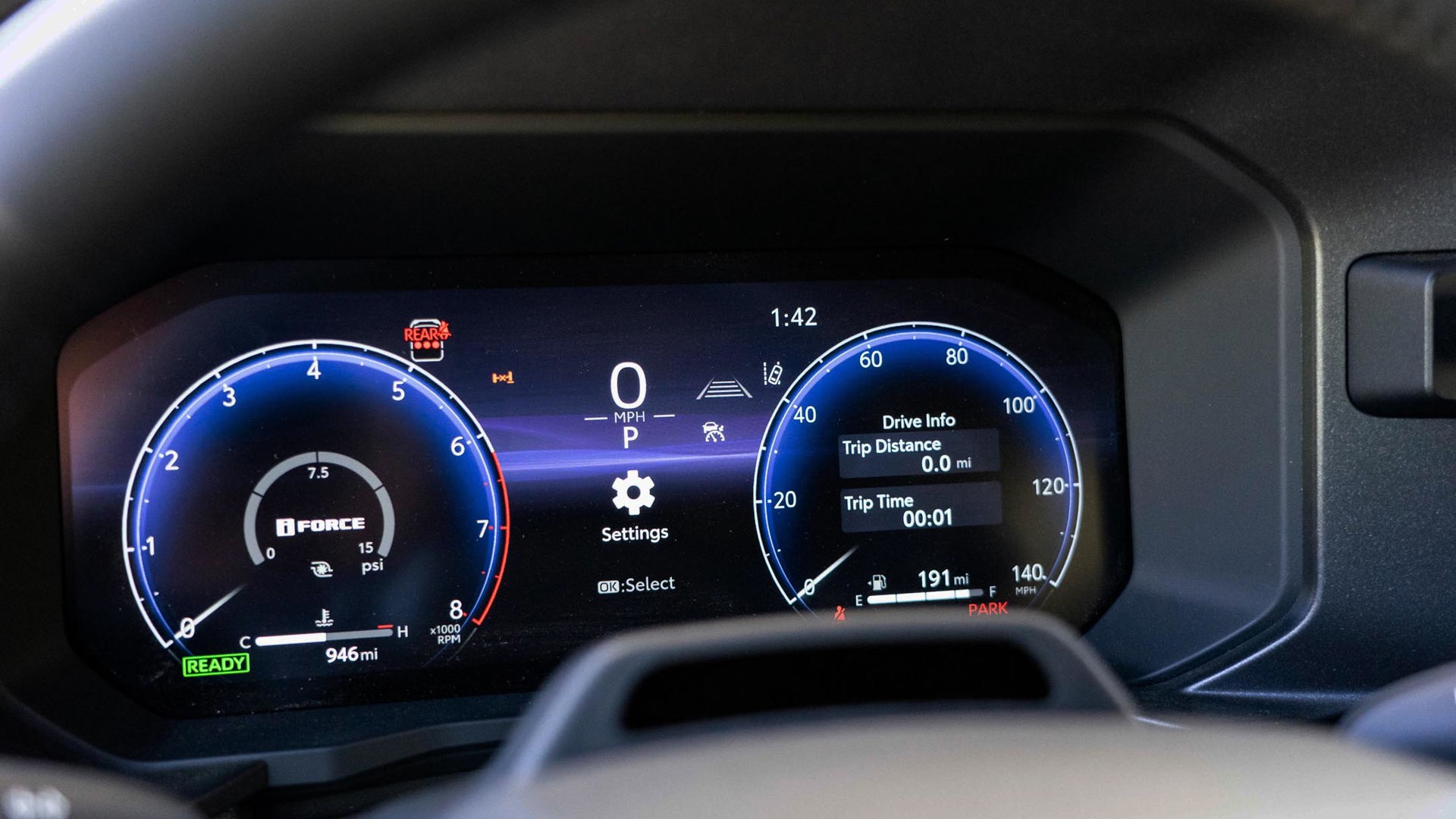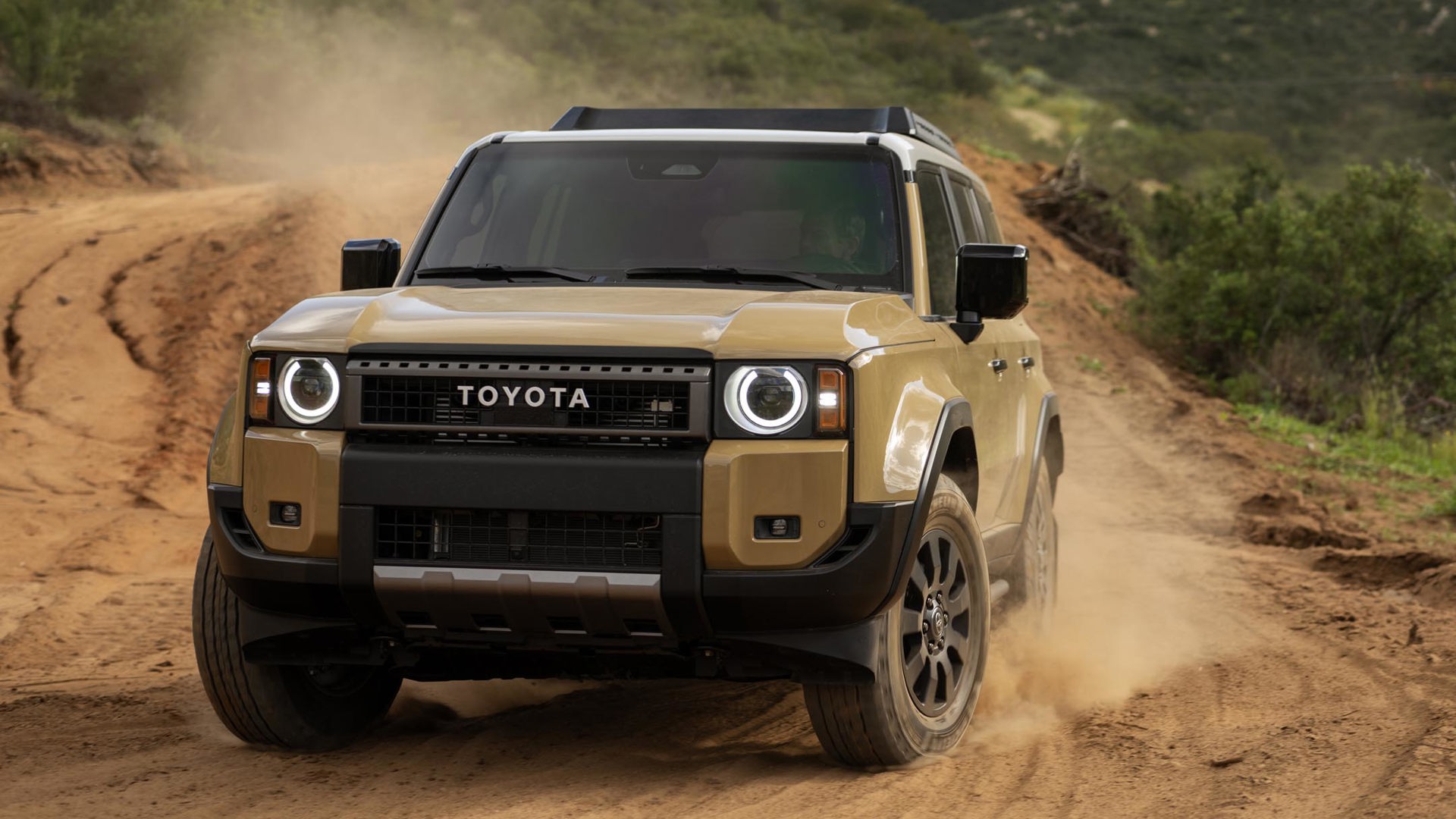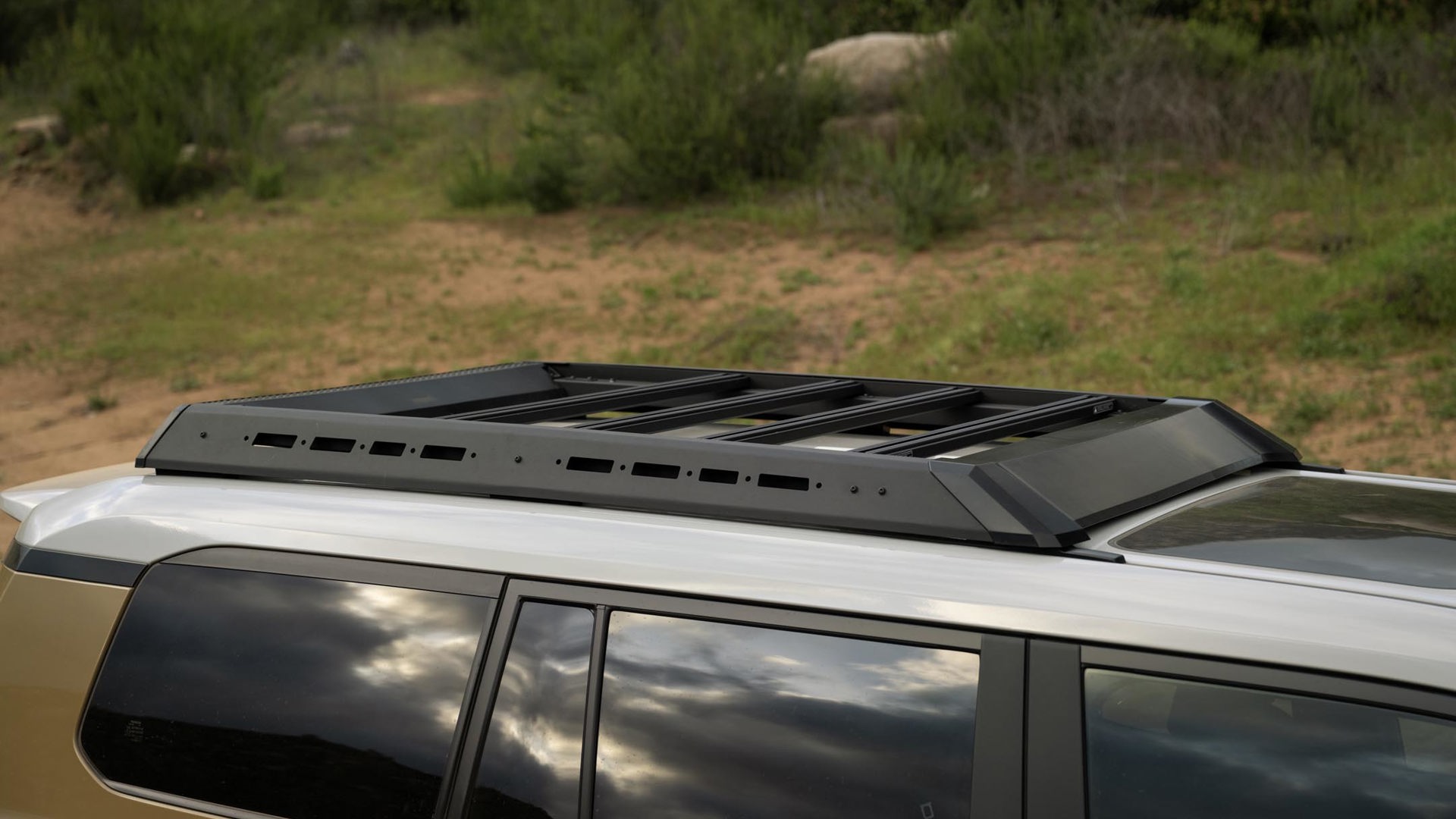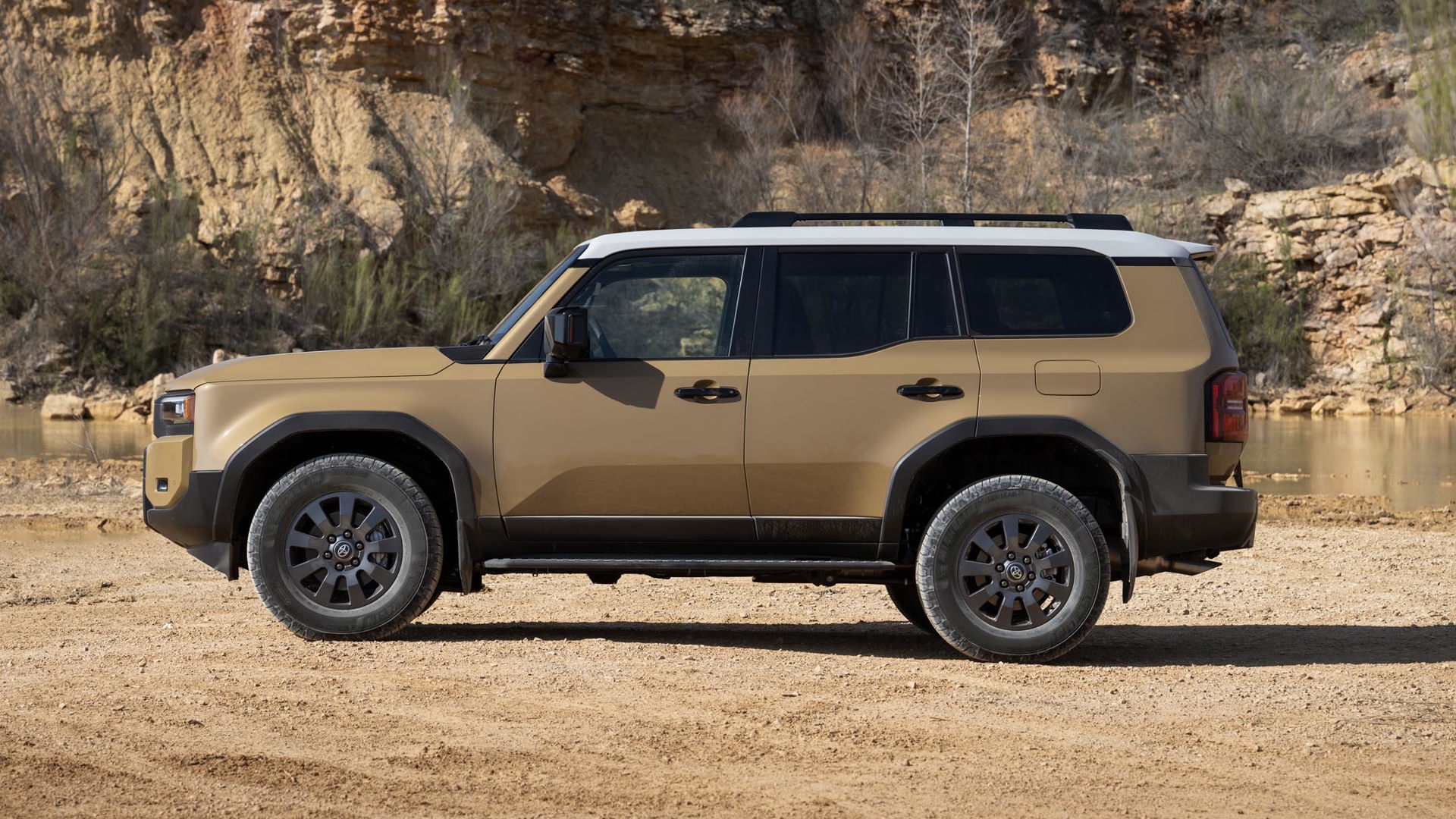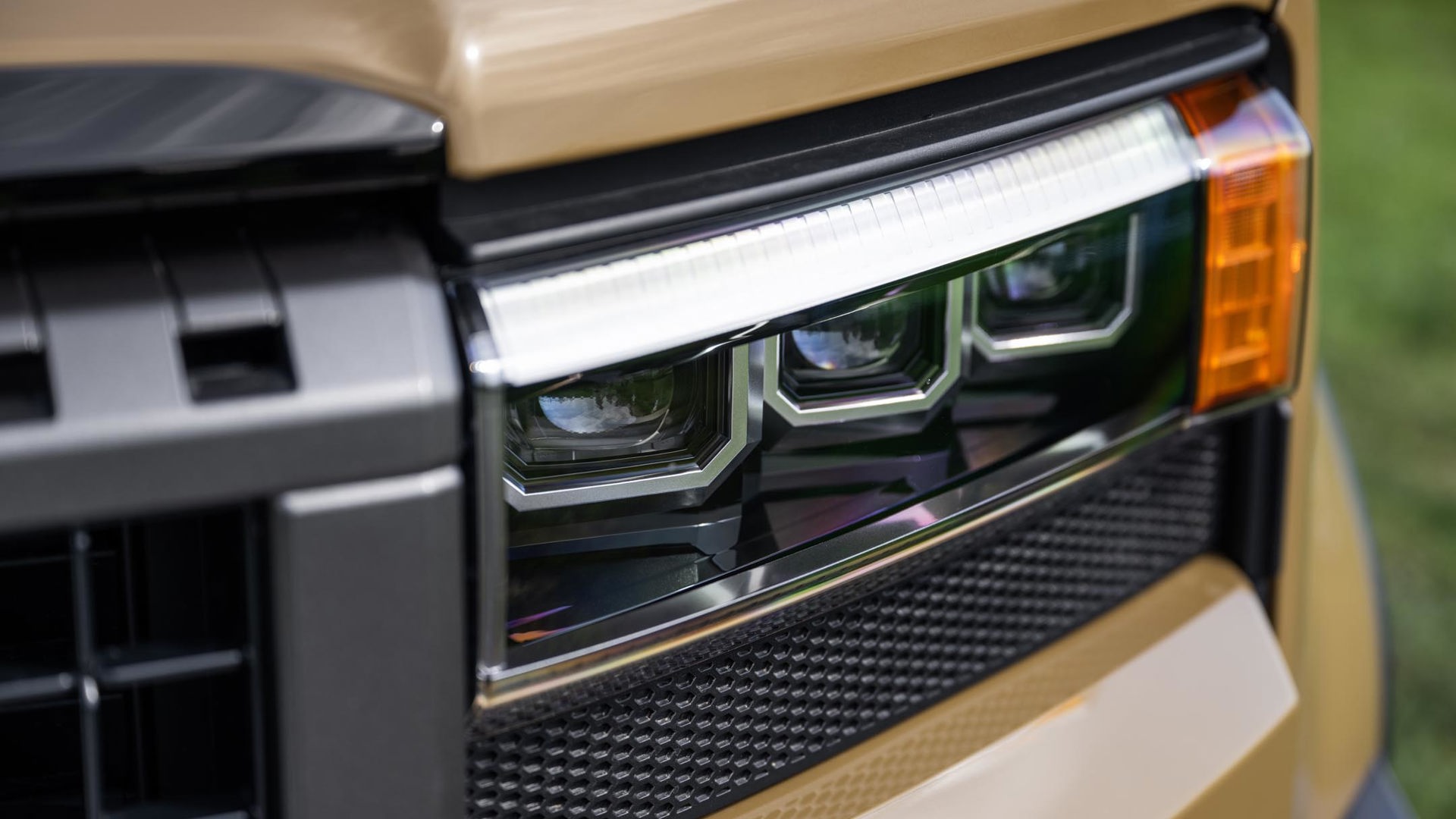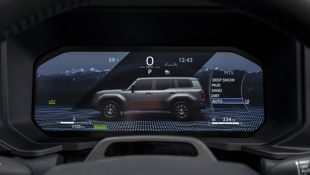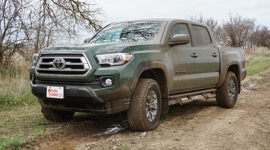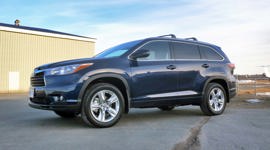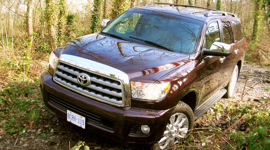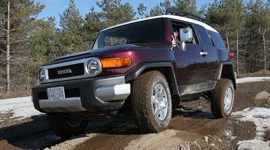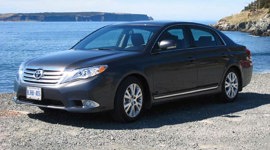Photos Brendan McAleer, Toyota
Time and again, Japan’s greatest automotive successes have come through careful examination of existing iconic vehicles and then simply building them so the doors don’t fall off. I will here direct you towards the Mazda Miata or the original Honda Civic, both of which took inspiration from British design, but didn’t have electrical systems built out of twine and stale crumpets.
In the case of the Land Cruiser, the icon was the Second World War-era Jeep. Toyota was commissioned to build a version of the Willys Jeep that could be supplied during the Korean War. The first vehicle badged as a Land Cruiser arrived in 1954 as basic but rugged off-road transportation, and since that time, Land Cruisers can be found serenely navigating dangerous and difficult terrain all over the world. Except, that is, in Canada.
For roughly three decades, you could buy a brand-new Land Cruiser in Canada, and then for three further decades, you couldn’t. The nameplate left the market in 1989, and while the Lexus GX stuck around to be a leather-lined off-roader that everyone knew was a Land Cruiser underneath, Toyota decided its near-legendary 4x4 was not for hosers.
But now the Land Cruiser is back for the 2024 model year. To the south of San Diego in view of the Mexican border, we hit the trails and the highway to see how Toyota’s 70-year-old icon stacks up. The good news is that the doors still don’t fall off. The bad news is that your own metaphorical doors might fall off when you see how high the price tag climbs.
Band of Brothers

This latest generation of Land Cruiser is all-new, built on Toyota’s Global Architecture F (GA-F). This is a proper body-on-frame SUV, and it is one of five total models that share this underpinning with a boxed-in ladder frame produced in various lengths depending whether Toyota is building a Tundra, Tacoma, Sequoia, or 4Runner.
The Land Cruiser is the shortest of the five, sharing its 2,850-mm wheelbase with the recently released Lexus GX 550. It has slightly better approach and breakover angles than the Lexus, at 31 and 25 degrees, respectively, and the same departure angle of 22 degrees. Toyota also says the modular panels at the corners of the vehicle are designed to be easily replaceable, making the Land Cruiser a little better suited to rough and tumble than its Lexus brother.
The other obvious comparison in the Toyota family is the just-launched 4Runner. The Land Cruiser looks smaller and shorter than the 4Runner, but it isn’t. The pair are within 50 mm of length (the Land Cruiser being longer), and while the base Land Cruiser is narrower, the other models are slightly wider. The 4Runner is just much more aggressively styled, particularly when comparing its Trailhunter version with its 33-inch tires to the dinky 18-inch wheels and all-season rubber on the base Land Cruiser.
But as the owner of any Suzuki Samurai will tell you, off-road looks do not equate to off-road chops. The Land Cruiser is boxy and plain because it has always been boxy and plain, and there is a considerable charm to it in person. The base model, dubbed the 1958, has friendly round headlights and looks positively UN-spec in white. It comes in peace, contrasting the 4Runner’s Halo Warthog assault vehicle vibes.
Ace of Base
There are essentially three-plus-one grades of Land Cruiser available for its reintroduction to Canada: the 1958 base model, an upgrade with more tech features, a luxury-oriented Premium grade with leather, and so on, and the limited-run 290-unit First Edition at the top. All come with Toyota’s 2.4L turbocharged and hybridized four-cylinder engine and an eight-speed automatic transmission with a dual-range transfer case.
Toyota calls this engine the i-Force Max, which sounds like a 1980s kid’s television show about robots punching other robots. For the Land Cruiser application, Toyota rates this engine for 326 hp at 6,000 rpm and 465 lb-ft of torque at 1,700 rpm. It is a mild hybrid with a 48-hp electric motor sandwiched between the engine and the bell housing of the transmission, powered by a 1.87-kWh nickel–metal-hydride battery pack. A trailer hitch is standard and maximum towing is rated at 6,000 lb.
Toyota recommends premium fuel for the Land Cruiser, but it’s worth pointing out that every single one of those figures is identical to the 4Runner specifications, which is set up to run on 87 octane, so you don’t need to bother. On higher-octane fuel, a little more peak power might be available, but this powertrain is all about torque.
First up was hitting the rock-crawling trail in a 1958 base model. Toyota was also using this area to demonstrate the new Trailhunter grade of the Tacoma, impressions for which are set to drop later this month. Suffice it to say the rocky portions, small water ford, and undulating dirt provided a moderate off-road challenge. The basic Land Cruiser breezed through like it was a four-lane highway.
With a standard low-range transfer case, centre and rear locking differentials, and Toyota’s updated low-speed crawl control, the Land Cruiser 1958 chugged along without fuss. When in low range, the driver activates crawl control through a dial on the dash and can set the speed in five increments, none faster than a brisk walk. No throttle or brake input is needed – although you can override it easily – and the system just adds power as needed on the way up and controls descent speeds on the way down.
No more Land Cruiser than this is needed, although there’s a slight asterisk there, as you might want a bit more. Running through the course again in higher grades of the Land Cruiser allowed for the addition of Toyota’s terrain-selection system and a push-button stabilizer disconnect for more suspension articulation, both of which came with a slight improvement, but was not the most effective off-road tech.
Buyers will likely want to step up from the retro-inspired 1958 model because of Toyota’s camera-based Terrain monitor. Annoyingly, you currently can’t lock the camera on, but in automatic mode, it does give a bright and clear view ahead and to the sides, nearly eliminating the need for a spotter outside of the car. For narrow trails and rock-crawling, it’s a must-have and might be the feature to tempt you out of a base model.
One Engine to Rule Them All
Let’s talk more about that four-cylinder turbo hybrid, as Toyota has bet the farm on this one. In the case of the 4Runner, the roar of the V6 will be missed. Under load in the Land Cruiser, the four sounds almost like a diesel, with turbo whistle and a bit of clatter.
The soundtrack suits this boxy off-roader perfectly, and the performance can’t be argued with. Adding low-end turbocharged torque to the instant grunt of an electric motor makes crawling up steep slopes or over obstacles almost too easy. Finessing a climb is simple.
Out on the open road, away from the trails, the Land Cruiser is decently quick. Those plain-looking all-season tires, as out of place on a technical trail as someone hiking up a mountain in tennis shoes, suddenly become a benefit. There’s nothing off-roady about this SUV on the road, besides the decent visibility provided by the boxy shape, and the low-set side windows. The handling doesn’t feel old-school body-on-frame, thanks to double wishbone suspension up front and a multi-link rear. The chunky controls and square nose remind you that you’re in a proper SUV, but the composed ride and handling don’t.
Further, while it’s a mild-hybrid system, the fuel consumption is still excellent for a body-on-frame SUV. Official figures are 10.7 L/100km city and 9.5 L/100 km on the highway, and while it’ll be interesting to hand-measure the actual performance over a week, projected mixed-use of 10.1 L/100 km is really solid for a true 4x4.
Overall, the Land Cruiser is completely civilized, and compared to an old 4Runner, it might as well be a Lexus product. Which, with a few interior tweaks, it actually is. Keep that thought in your head for a bit here.
Tech Space
Apart from the 1958 edition, which gets an eight-inch touchscreen, all Land Cruisers come with a 12.3-inch touchscreen with Toyota’s latest software. The company’s third-generation driver assists are standard, as are wireless Apple CarPlay and Android Auto.
The fabric interior is fantastic, and, quite frankly, it’s a shame it’s only available on the 1958 model. Toyota should consider a technology package for the 1958, as buyers will fall in love with the round-headlight look. The wiring harness is the same for the square-headlight trucks for after-the-fact conversion, but given the appeal of the Land Cruiser’s heritage, more retro options off the showroom floor would appeal to nostalgic drivers. Note that the First Edition range-topper comes with round headlights, too.
The Premium trim just below it has some nice features like a chiller box in the centre console. Toyota’s hands-off low-speed traffic jam assist would be nice when heading back into the city after a weekend spent exploring, but the Premium’s 20-inch alloys signal that this version is a little more for the off-road look than actual off-roading.
One useful standard feature for all Land Cruisers is a proper 2,400W AC plug in the rear cargo area. If this is going to be your camping rig, even a single plug can be really handy for everything from powered coolers to inflating kayaks and paddle boards.
And it’d be a great rig for camping, with pop-open rear glass to really cram all the gear in there. The folding rear seats are more of a mixed bag; they can be folded not-quite-flat or tumbled forward, the latter not really being that useful. The battery pack does eat up cargo space, but there’s 1,061 L with the second row folded. Getting a mattress into the back with the seats folded might not work for those who like to camp in their Land Cruiser.
Priced Like a Lexus
Time to talk about the elephant on this particular safari: the price. The base Land Cruiser 1958 starts at $69,290. The step up to the next model, called simply Land Cruiser, is an additional $8,000. The Premium grade will set you back $83,290, and the First Edition is an eyebrow-raising $90,370. Admittedly, that last one is a bit of an outlier as a limited-run trim.
But as it stands, the theoretical volume-selling Land Cruiser is over $80K after freight and fees but before taxes. This lines up with U.S. prices, and, in fact, the U.S. model is a little more expensive with currency conversion. The bigger issue is that the Lexus GX 550 starts at $86,833, and, among other things, comes with six-cylinder power and more towing capacity.
The benefit, perhaps, is that we’ve had 30 years without a Canadian Land Cruiser, and the nameplate has always had ridiculously good resale value. Depending on what Toyota does with the 4Runner pricing, the premium for the Land Cruiser might not seem that excessive, and there is a bit of extra value baked in because of the expense of that hybridized powertrain.
Final Thoughts

On the umpteenth lap around the slightly quicker trail course, aptly dubbed The Playground, I finally realized what driving the Land Cruiser reminded me of. The truck bounced along the ruts, slew through tight turns on dirt, and generally felt much smaller to drive than its dimensions would indicate. It felt fun and lighthearted.
Not least in a 1958 edition with those round headlights, this generation of Land Cruiser picks up where the FJ Cruiser left off. You remember those, of course, the retro-styled trucks with quirks like triple wipers and rearward-opening half doors. They represented Toyota letting down its hair a bit, and if you haven’t looked at what the market on them has done in the past few years, it is red hot. Prices are through the roof (with or without light bar added).
The Land Cruiser bowed out of Canada in the late 1980s because it was going to be an expensive distraction from the 4Runner. Selling both SUVs in Toyota showrooms is going to result in some brotherly competition between the two, but even without having driven the 4Runner, there are two distinct personalities here.
Supremely capable without being showy, fun to drive with an honest feel, and even reasonably efficient, the Land Cruiser returns to us as a charismatic charmer. The price might make you wince. But Toyota will sell every one it brings in.













